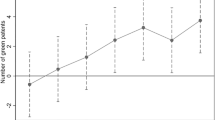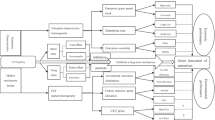Abstract
Carbon emission trading scheme (ETS) policy is a quota-based market-motivated environmental regulation policy that by transforming environmental responsibility of enterprises into self-consciousness behavior induces green innovation behavior in enterprises and influences the level of regional green innovation. Based on panel data on green patents in 30 Chinese provinces from 2010 to 2019, the paper uses six Chinese pilot provinces for ETS as the treatment group to investigate the induced effects of Chinese ETS policy on the quantity and quality of green technology innovation using difference in difference model and analyzes the effects of Chinese ETS policy on green technology innovation in different pilot regions using a synthetic control method. The findings indicate that (1) compared with non-pilot areas, the carbon emission trading policies in pilot areas can induce green technology innovation activities. (2) In all pilot regions, ETS policies significantly promoted the quantity and quality of green technology innovation, but the quantity promotion effect was significantly better than the quality promotion effect, and the low-quality promotion effect was better than the high-quality promotion effect. (3) In terms of individual pilot region, ETS policies in Guangdong, Hubei and Tianjin significantly promoted the quantity of green technology innovation and low-quality green technology innovation, but significantly inhibited or suppressed high-quality green technology innovation in a short term. This paper not only enriches the research on environmental equity trading policies and green technology innovation theoretically, but also provides empirical evidence for the effectiveness of carbon emission trading schemes pilots program in China.






Similar content being viewed by others
Data availability
The datasets used or analyzed during the current study are available from the corresponding authors on reasonable request.
Notes
China successively launched 7 ETS pilots in 2013–2014 in 6 provinces (Shenzhen, Guangdong, Hubei, Beijing, Shanghai, Tianjin, and Chongqing). These pilots are located in 6 provinces and cities (Shenzhen is under the jurisdiction of Guangdong Province). Beijing, Shanghai, Tianjin, and Chongqing are municipalities directly under the Central Government in China, and their administrative level is equivalent to the provincial level. Therefore, the definition of these provinces and cities in the paper is collectively referred to as provinces, and the six pilot provinces and cities are referred to as Guangdong, Hubei, Beijing, Shanghai, Tianjin, and Chongqing.
Tibet is not included as data for Tibet is missing.
The International Patent Classification Green List is an online tool launched by the World Intellectual Property Organization (WIPO) to search for Environmentally Friendly Patents (EST), which classifies green patents according to the United Nations Framework Convention on Climate Change: transportation, waste management, energy conservation, alternative energy production, administrative regulatory or design aspects, agriculture or forestry, and nuclear power generation.
References
Abadie A, Gardeazabal J (2003) The economic costs of conflict: a case study of the Basque Country. Am Econ Rev 93(1):113–132
Abadie A, Diamond A, Hainmueller J (2010) Synthetic control methods for comparative case studies: estimating the effect of California’s tobacco control program. J Am Stat Assoc 105(490):493–505
Bai Y, Song S, Jiao J, Yang R (2019) The impacts of government R&D subsidies on green innovation: evidence from Chinese energy-intensive firms. J Clean Prod 233:819–829
Bayer P, Aklin M (2020) The European Union emissions trading system reduced CO2 emissions despite low prices. Proc Natl Acad Sci 117(16):8804–8812
Borghesi S, Cainelli G, Mazzanti M (2015) Linking emission trading to environmental innovation: evidence from the Italian manufacturing industry. Res Policy 44(3):669–683
Bronzini R, Piselli P (2016) The impact of R&D subsidies on firm innovation. Res Policy 45(2):442–457
Calel R, Dechezleprêtre A (2016) Environmental policy and directed technological change: evidence from the European carbon market. Rev Econ Stat 98(1):173–191
Carrionflores CE, Innes R, Sam AG (2013) Do voluntary pollution reduction programs (VPRs) spur or deter environmental innovation? Evidence from 33/50. J Environ Econ Manag 66(3):444–459
Chen S, Shi A, Wang X (2020) Carbon emission curbing effects and influencing mechanisms of China’s emission trading scheme: the mediating roles of technique effect, composition effect and allocation effect. J Clean Prod 264:121700
Chen Z, Zhang X, Chen F (2021) Do carbon emission trading schemes stimulate green innovation in enterprises? Evidence from China. Technol Forecast Soc Chang 168:120744
Chetty R, Looney A, Kroft K (2009) Salience and taxation: theory and evidence. Am Econ Rev 99(4):1145–1177
Cui J, Zhang J, Zheng Y (2018) Carbon pricing induces innovation: evidence from China’s regional carbon market pilots. In AEA Papers and Proceedings 108:453–457
Dechezleprêtre A, Martin R (2010) Low carbon innovation in the UK: evidence from patent data. Report for the UK Committee on Climate Change, Centre for Climate Change Economics and Policy, Grantham Research Institute on Climate Change and the Environment
Gallié EP, Legros D (2012) Firms’ human capital, R&D and innovation: a study on French firms. Empir Econ 43(2):581–596
Griliches Z, Hall B, Hausman J (1986) Patents and R&D: is there a lag. Int Econ Rev 27(2):265–283
Hall BH, Lerner J (2010) The financing of R&D and innovation. In Handbook of the Economics of Innovation, North-Holland
Hicks J (1932) Theory of wages. Macmillan and Co., London
Horbach J (2008) Determinants of environmental innovation - new evidence from German panel data sources. Res Policy 37(1):163–173
Hu AG, Jefferson GH (2009) A great wall of patents: what is behind China’s recent patent explosion? J Dev Econ 90(1):57–68
Hu JF, Pan XX, Huang QH (2020a) Quantity or quality? The impacts of environmental regulation on firms’ innovation - quasi-natural experiment based on China’s carbon emissions trading pilot. Technol Forecast Soc Chang 158
Hu Y, Ren S, Wang Y, Chen X (2020b) Can carbon emission trading scheme achieve energy conservation and emission reduction? Evidence from the industrial sector in China. Energy Econ 85:104590
IPCC (2014) Climate change: synthesis report. Contribution of working groups I, II and III to the fifth assessment report of the intergovernmental panel on climate change 151
Li C, Li X, Song D, Tian M (2021) Does a carbon emissions trading scheme spur urban green innovation? Evidence from a quasi-natural experiment in China. Energy Environ 33(4):640–662
Li J, Du Y (2021) Spatial effect of environmental regulation on green innovation efficiency: Evidence from prefectural-level cities in China. J Clean Prod 286:125032
Li W, Zheng M (2016) Is it substantive innovation or strategic innovation? - Impact of macroeconomic policies on micro-enterprises’ innovation. Econ Res J 4:60–73
Liu NQ, Wu Y (2017) Can the enlargement in Yangtze River Delta boost regional economic common growth. China Ind Econ 6:79–97
Liu Y, Liu S, Shao X, He Y (2022) Policy spillover effect and action mechanism for environmental rights trading on green innovation: evidence from China’s carbon emissions trading policy. Renew Sust Energ Rev 153:111779
Liu Z, Sun H (2021) Assessing the impact of emissions trading scheme on low-carbon technological innovation: evidence from China. Environ Impact Assess Rev 89:106589
Lyu X, Shi A, Wang X (2020) Research on the impact of carbon emission trading system on low-carbon technology innovation. Carbon Manag 11(2):183–193
Miao C, Fang D, Sun L, Luo Q (2017) Natural resources utilization efficiency under the influence of green technological innovation. Resour Conserv Recycl 126(15):153–161
Porter ME, Van der Linde C (1995) Toward a new conception of the environment-competitiveness relationship. J Econ Perspect 9(4):97–118
Qi S, Lin S, Cui J (2018) Do environmental rights trading schemes induce green innovation? Evidence from listed firms in China. Econ Res J 53(12):129–143
Qi SZ, Zhou CB, Li K, Tang SY (2021) Influence of a pilot carbon trading policy on enterprises’ low-carbon innovation in China. Clim Pol 21(3):318–336
Spash CL (2010) The brave new world of carbon trading. New Polit Econ 15(2):169–195
Tao F, Zhao J, Zhou H (2021) Does environmental regulation improve the quantity and quality of green innovation: evidence from the target responsibility system of environmental protection. China Ind Econ 2:136–154
Teixidó J, Verde SF, Nicolli F (2019) The impact of the EU emissions trading system on low-carbon technological change: the empirical evidence. Ecol Econ 164:106347
Wang B (2017) Review of environmental policy and technological innovation. Econ Rev 4:131–148
Wang K, Chen M (2018) Review and prospect of China’s carbon trading system. J Beijing Inst Technol Soc Sci Edition 20(2):24–31
Wang W, Wang D, Lu N (2020) Research on the impact mechanism of carbon emissions trading on low-carbon innovation in China. China Popul Resour Environ 30:41–48
Wu M, Liu C, Huang J (2021) The special economic zones and innovation: evidence from China. China Econ Quart Intl 1(4):319–330
Yao S, Yu X, Yan S, Wen S (2021) Heterogeneous emission trading schemes and green innovation. Energy Policy 155:112367
Zhang W, Li G, Guo F (2022) Does carbon emissions trading promote green technology innovation in China? Appl Energy 315:119012
Zhang YJ, Peng YL, Ma CQ, Shen B (2017) Can environmental innovation facilitate carbon emissions reduction? Evidence from China. Energy Policy 100:18–28
Zhou F, Wang X (2022) The carbon emissions trading scheme and green technology innovation in China: a new structural economics perspective. Econ Anal Pol 74:365–381
Zhu J, Fan Y, Deng X, Xue L (2019) Low-carbon innovation induced by emissions trading in China. Nat Commun 10(1):1–8
Acknowledgements
The authors gratefully acknowledge the editor and the anonymous referees for their valuable comments on this paper.
Author information
Authors and Affiliations
Contributions
All authors contributed to the study conception and design. All authors commented on previous versions of the manuscript and approved the final manuscript. The specific contributions are as follows. Conceptualization: LF. Methodology: YY. Formal analysis and investigation: LF, YY, and TW. Writing-original draft preparation: LF. Writing—review and editing: RC and ZZ. Resources: YY. Supervision: TW and ZZ.
Corresponding author
Ethics declarations
Ethics approval
This article does not contain any studies with human participants or animals performed by any of the authors.
Consent to participate
All authors participated in this article.
Consent for publication
All authors have given consent to the publication of this article.
Competing interests
The authors declare no competing interests.
Additional information
Responsible Editor: Roula Inglesi-Lotz
Publisher’s note
Springer Nature remains neutral with regard to jurisdictional claims in published maps and institutional affiliations.
Rights and permissions
Springer Nature or its licensor holds exclusive rights to this article under a publishing agreement with the author(s) or other rightsholder(s); author self-archiving of the accepted manuscript version of this article is solely governed by the terms of such publishing agreement and applicable law.
About this article
Cite this article
Fu, L., Yi, Y., Wu, T. et al. Do carbon emission trading scheme policies induce green technology innovation? New evidence from provincial green patents in China. Environ Sci Pollut Res 30, 13342–13358 (2023). https://doi.org/10.1007/s11356-022-22877-1
Received:
Accepted:
Published:
Issue Date:
DOI: https://doi.org/10.1007/s11356-022-22877-1




